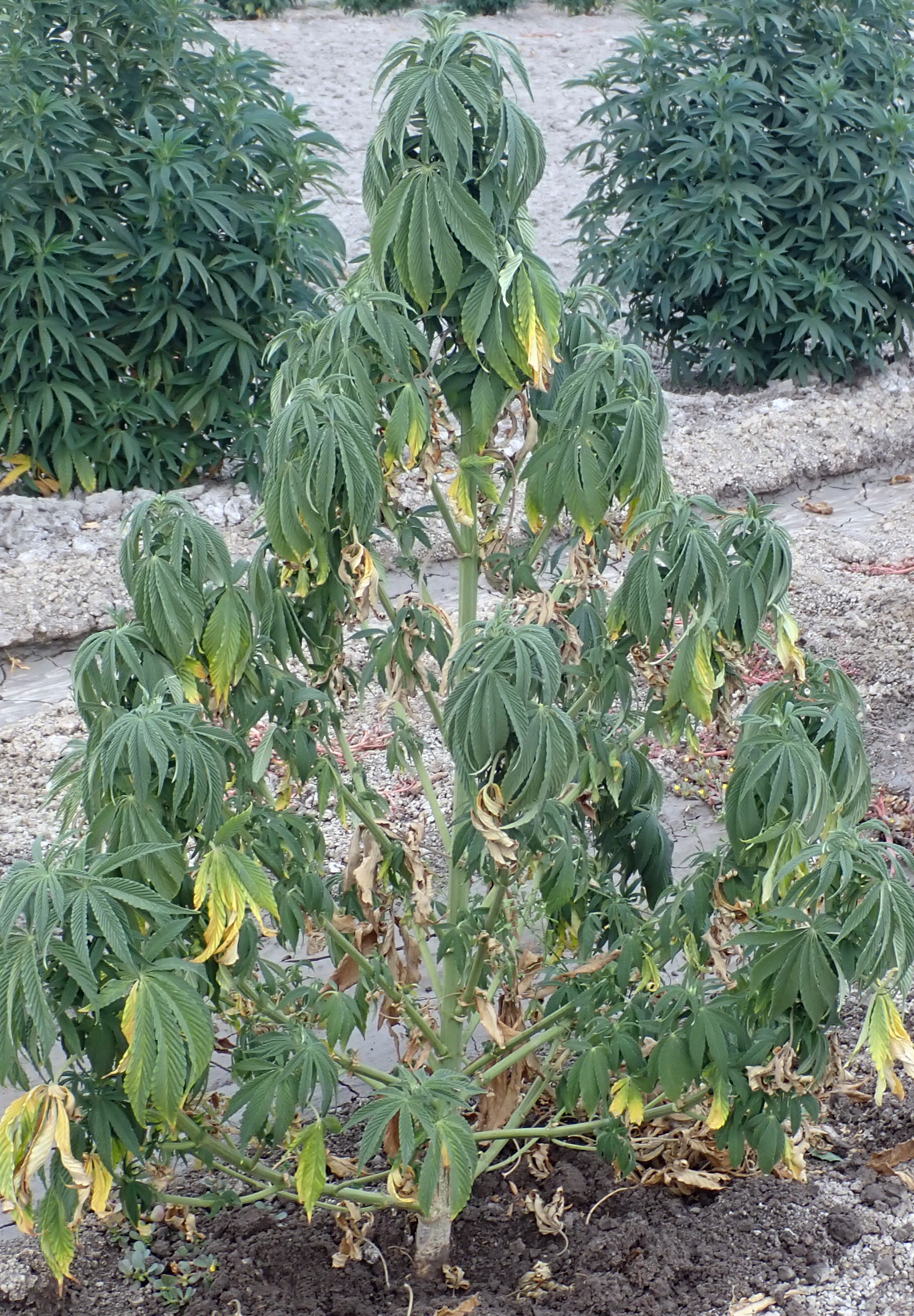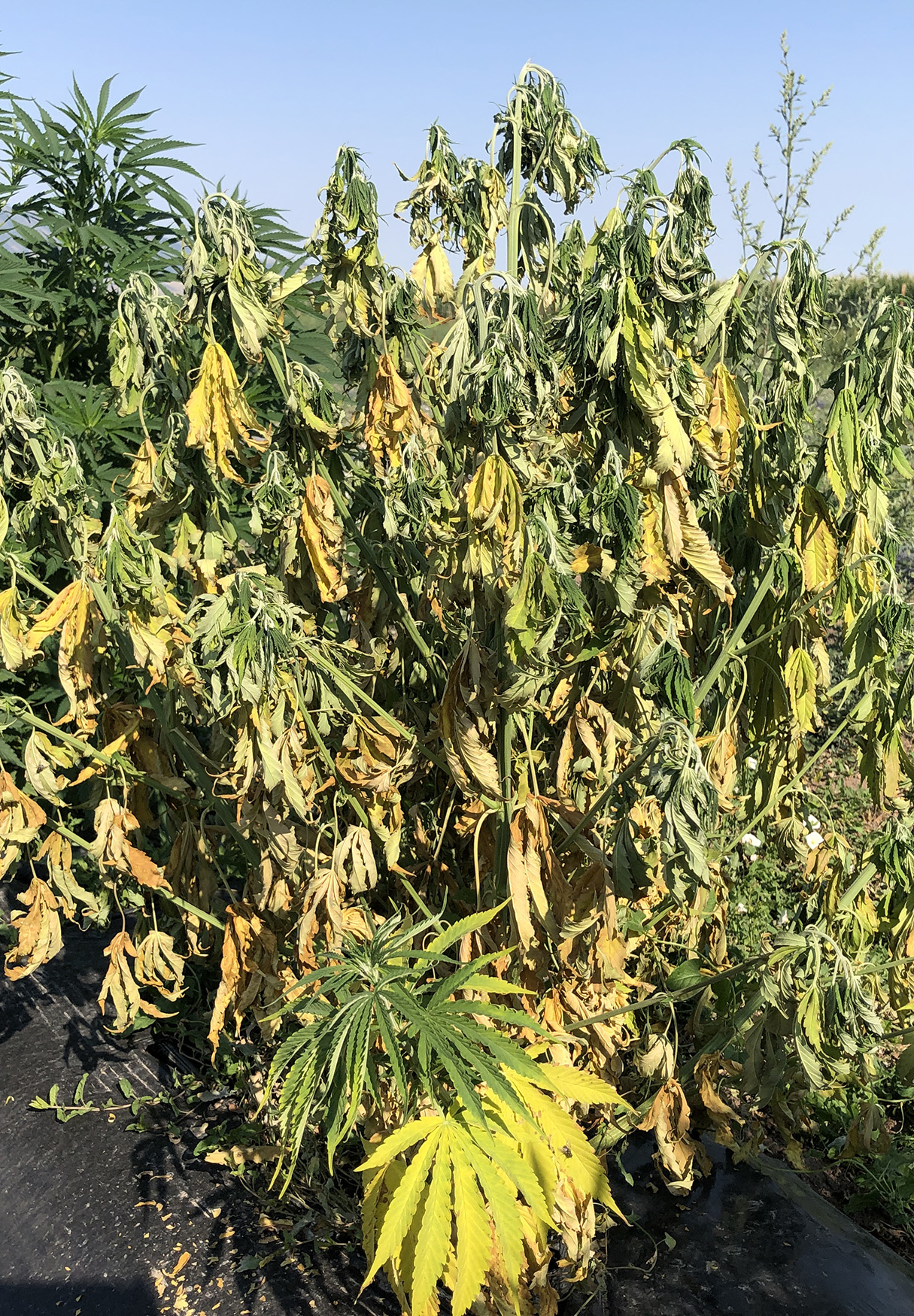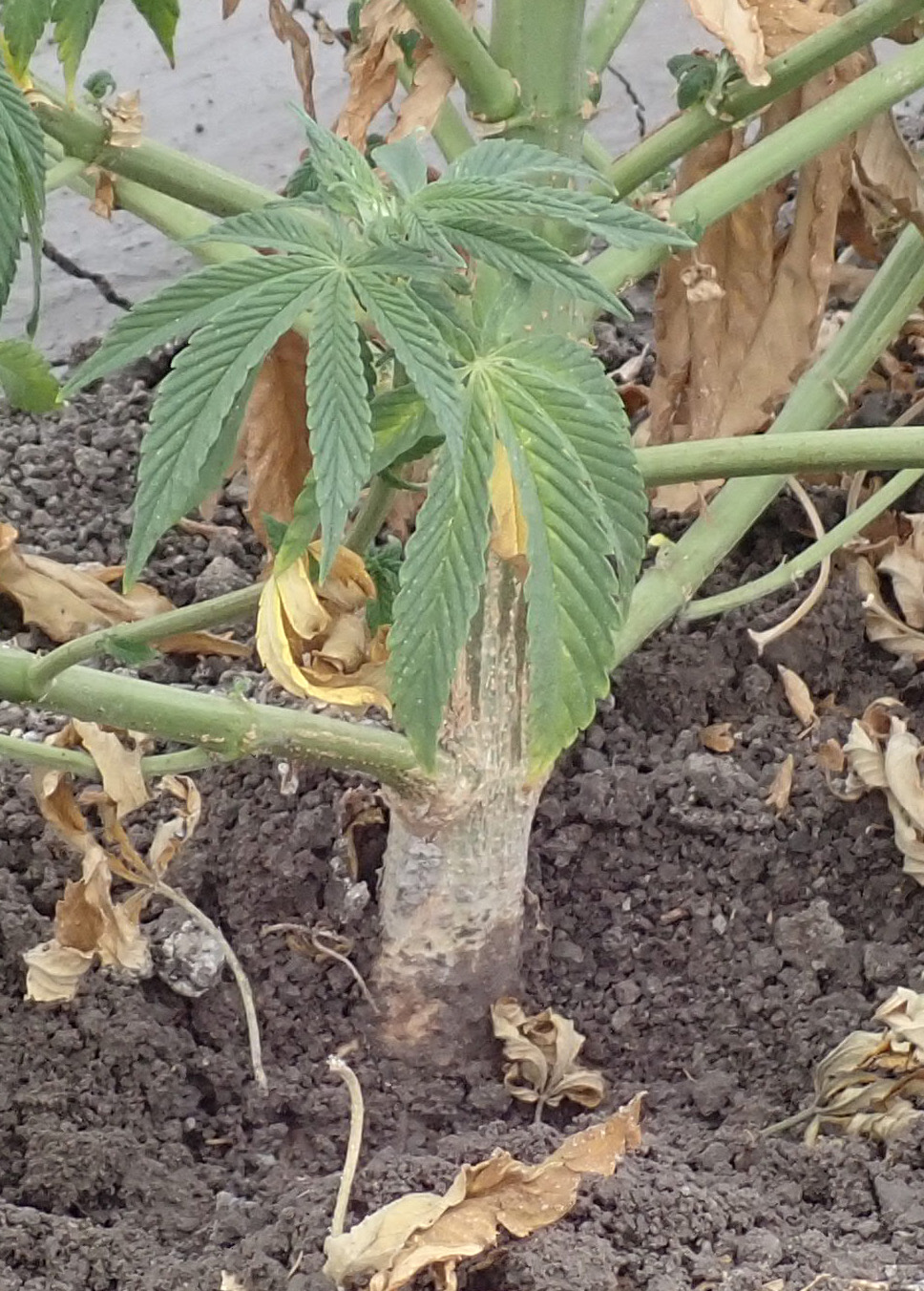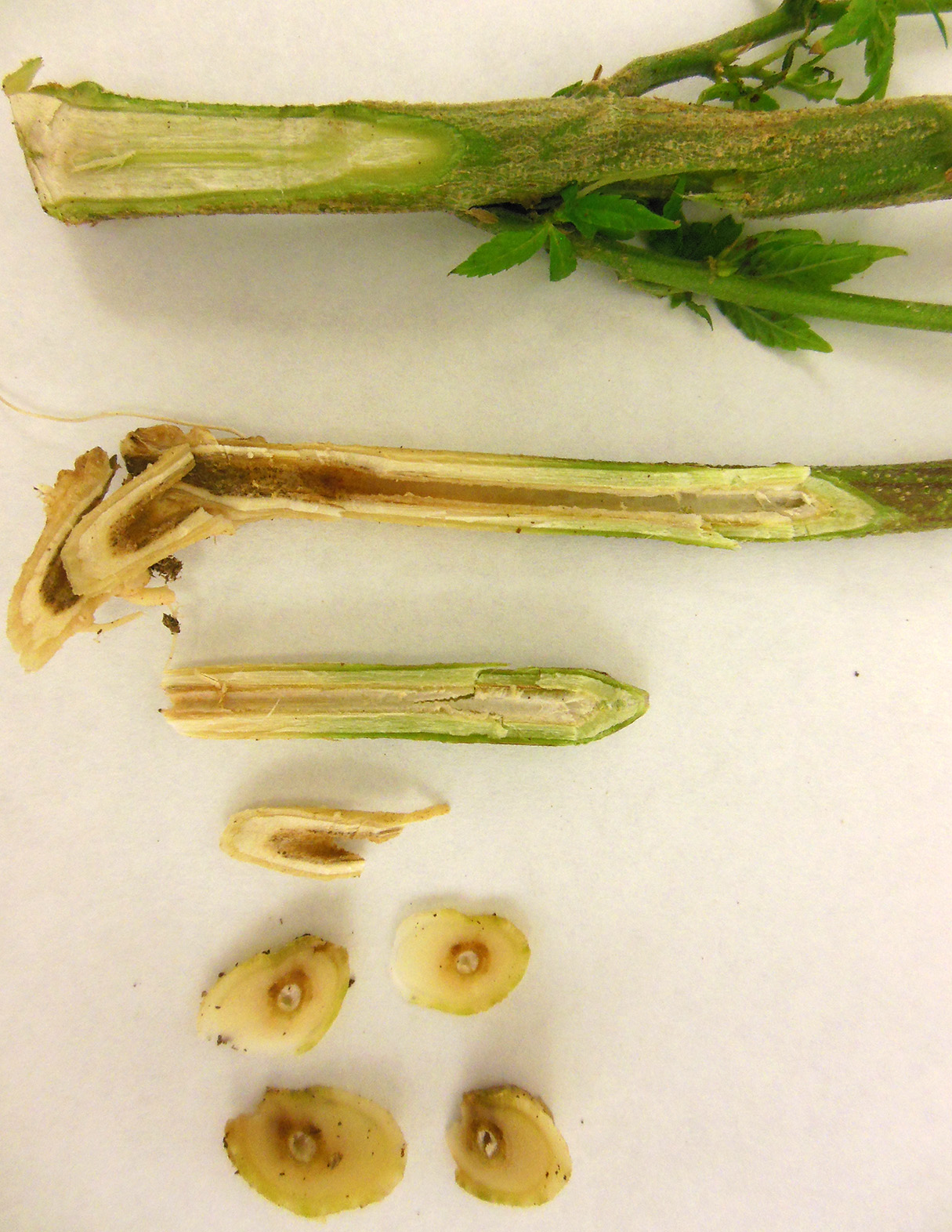Fusarium Wilt
Fusarium oxysporum f. sp. (formae speciales) cannabis, F. oxysporum f. sp. vasinfectum
 Initial wilting symptom of Fusarium wilt.
Initial wilting symptom of Fusarium wilt.

Wilt and recovery caused by Fusarium wilt leads to yellow foliage.
 With Fusarium wilt, there is no crown rot present.
With Fusarium wilt, there is no crown rot present.
Healthy plant (top) compared to plant infected with Fusarium (bottom).
Hosts
- The term “formae speciales” (f. sp.) means that the pathogen is usually host-specific.
- Neither Fusarium species listed above will infect plants other than hemp, with the exception that F. oxysporum f. sp. vasinfectum can infect cotton.
Symptoms
Hemp plants with Fusarium wilt will initially have chlorotic leaf tips, followed quickly by wilting and death. The vascular tissue in the stem will turn brown. A major difference with this disease versus Fusarium crown rot is that there is no associated root rot with Fusarium wilt.
Disease Cycle
Fusarium sp. is a soilborne pathogen. It can survive in the soil for many years as a saprophyte feeding on plant debris or by producing chlamydospores (resting spores). Under saturated soil conditions, chlamydospores germinate and infect the roots of a suitable host plant. The fungus colonizes the vascular system of the plant, leading to wilting F. oxysporum does not cause a root rot. It can be introduced into a greenhouse or field operation by infected transplants, contaminated soil, or equipment. Most F. oxysporum grow best at soil temperatures between 77-86°F and soil pH around 6.
Time for Concern
Throughout the growing season.
When and Where to Scout
- Scout plants biweekly looking for chlorotic leaf tips and wilted plants.
- Monitor soil moisture.
Threat Level
Medium in greenhouses. Low in field-grown hemp unless plants are over-watered or growing in poorly-drained soil.
Occurrence in Utah
F. oxysporum is common in Utah, but to date, Fusarium wilt has not been identified on hemp.
Management
- In field-grown hemp, management of Fusarium diseases requires prevention,
because no fungicides are currently registered for this disease on hemp. - Remove infected plants, including roots, in a timely manner.
- Clean equipment between fields to avoid spreading Fusarium to new locations.
- In greenhouses, use new pots and trays, or disinfect reused pots with a 10%-15% bleach solution for about an hour followed by a good rinse with water.
- Prepare potting mix on a plastic tarp to prevent contact with bare ground that may contain Fusarium or other soilborne pathogens.
- Monitor soil moisture to prevent overwatering.
- Where Fusarium wilt has been diagnosed, rotate the hemp field to a different crop for 2-3 years.
Look-alikes
Verticillium wilt, drought stress, Phytophthora crown rot.
Photo Credits
- USU Extension IPM Program
- Cross sections - Shouhua Wang, Nevada Department of Agriculture

